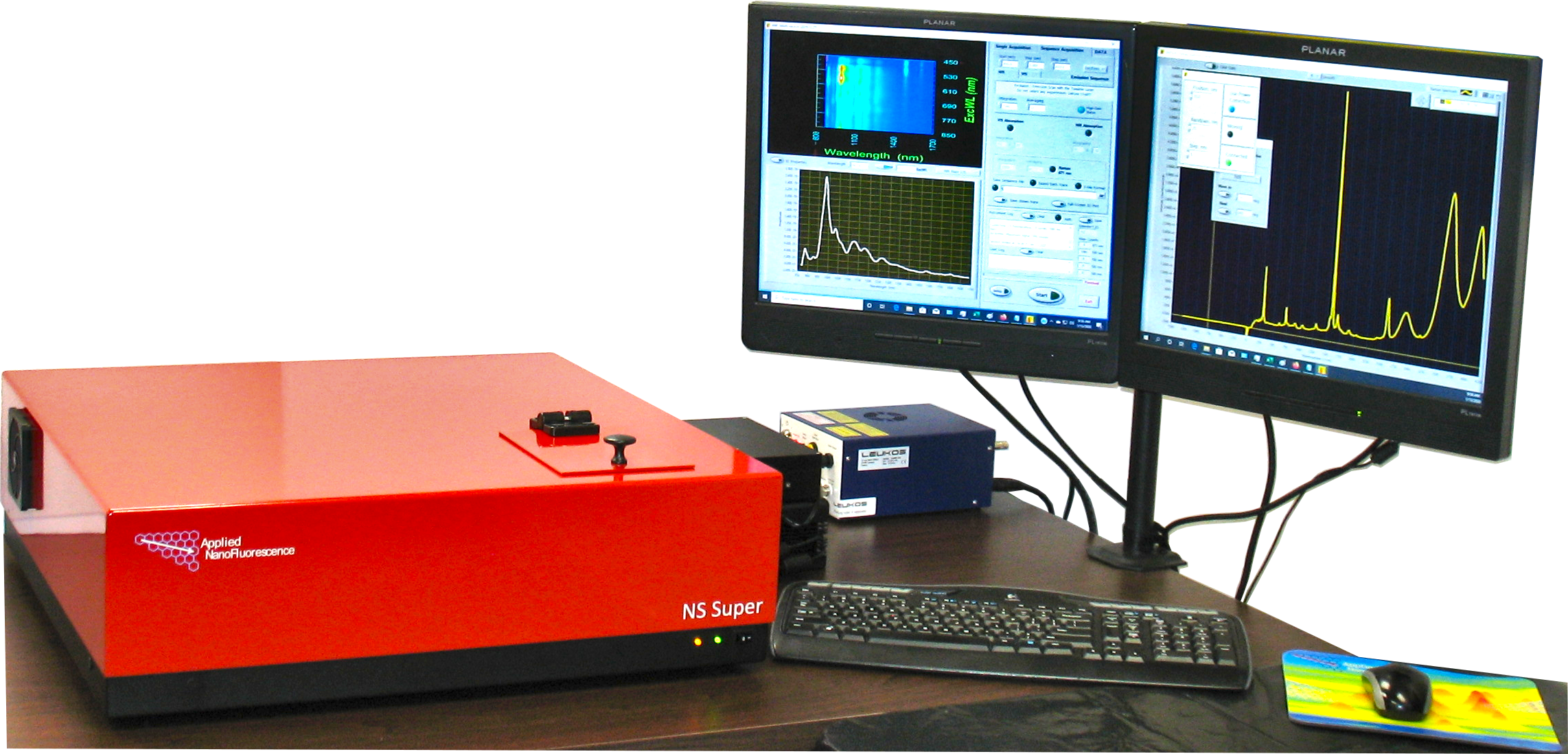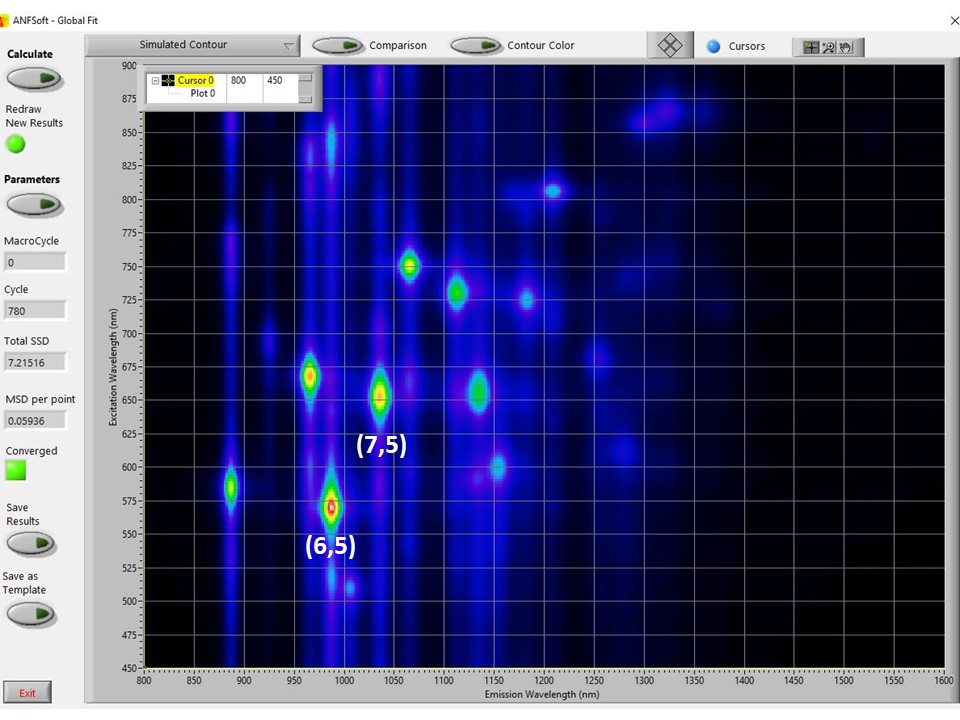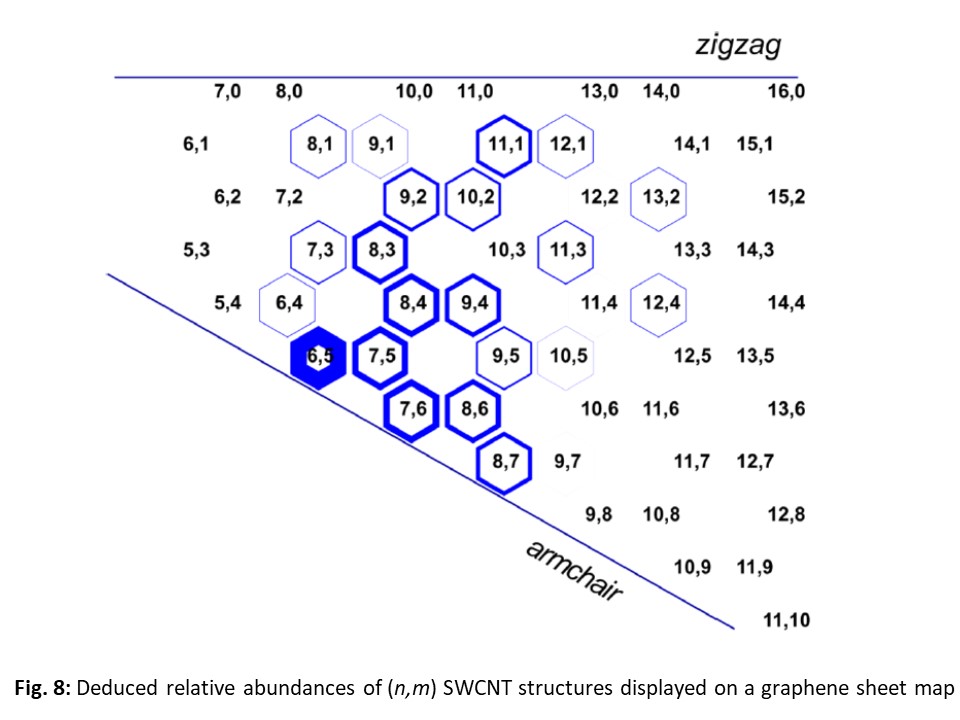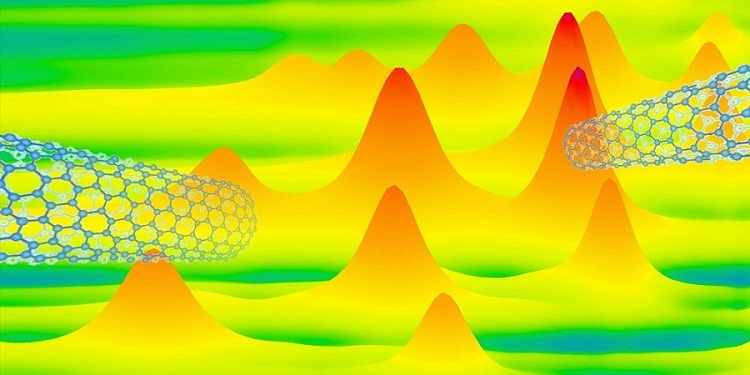Scientific Background
Near-infrared (NIR) band-gap fluorescence from individual semiconducting single-walled carbon nanotubes (SWCNT) was discovered in Dr. Weisman's laboratory at Rice University in 2001. Subsequent research deciphered the complex pattern of absorption and emission peaks seen in mixed samples. As a result, each distinct spectroscopic feature has now been assigned to a specific nanotube structure. These structural species differ in diameter and chiral angle, and are uniquely labeled by pairs of integers denoted (n,m).
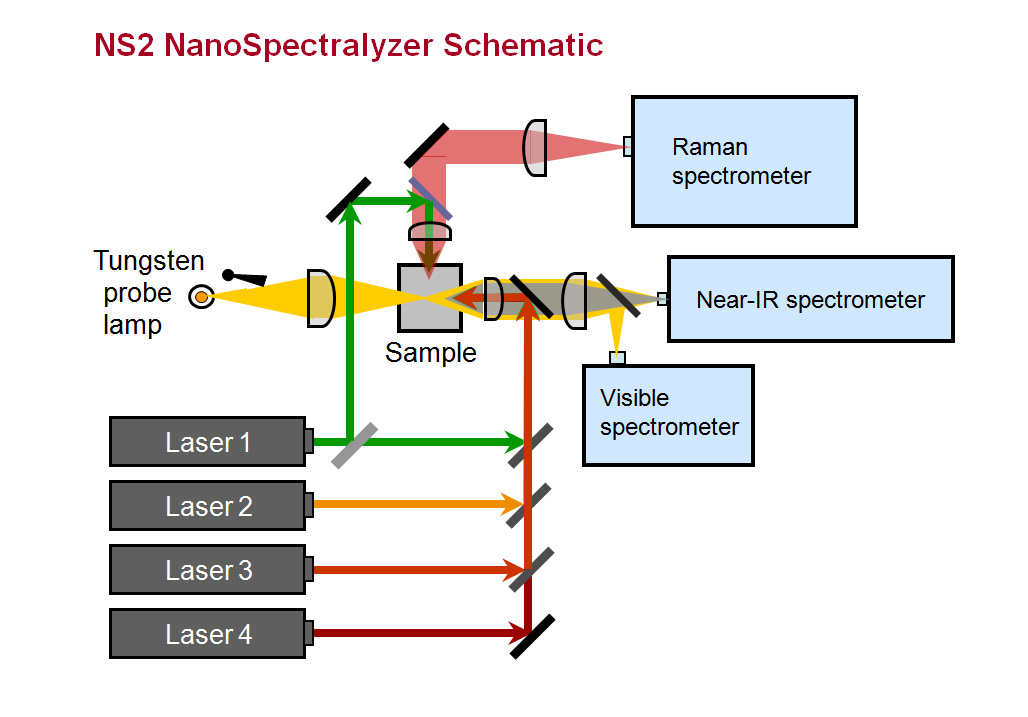 The near-infrared emission spectra of nanotube samples serve as compositional "fingerprints." One can therefore use spectrofluorimetry to deduce detailed information about the compositions of bulk samples, which invariably contain mixtures of (n,m) species. However, general-purpose spectrofluorometers are not well suited to this task. Although such instruments are versatile, they are also large, slow, and produce raw data that require substantial interpretation to yield the desired analytical result. To provide a more efficient and automated alternative, ANF has developed a specialized fluorimetric instrument designed specifically for SWCNT analysis. Our unique fluorimetric analyzer combines a compact, efficient optical system and sophisticated software that acquires and interprets the data. It allows users to easily and rapidly find the identities and amounts of specific (n,m) semiconducting nanotubes in their bulk samples.
The near-infrared emission spectra of nanotube samples serve as compositional "fingerprints." One can therefore use spectrofluorimetry to deduce detailed information about the compositions of bulk samples, which invariably contain mixtures of (n,m) species. However, general-purpose spectrofluorometers are not well suited to this task. Although such instruments are versatile, they are also large, slow, and produce raw data that require substantial interpretation to yield the desired analytical result. To provide a more efficient and automated alternative, ANF has developed a specialized fluorimetric instrument designed specifically for SWCNT analysis. Our unique fluorimetric analyzer combines a compact, efficient optical system and sophisticated software that acquires and interprets the data. It allows users to easily and rapidly find the identities and amounts of specific (n,m) semiconducting nanotubes in their bulk samples.
|
Fluorophores Developed for Biological Imaging The high sensitivity fluorescence capabilities of these instruments are well suited for characterization of new fluorophores developed for NIR biological window such as PbS and Ag2S quantum dots. |
|
SWCNT Spectroscopy Most SWCNTs can emit spectrally narrow near-infrared fluorescence at wavelengths that are characteristic of their precise diameter and chiral angle. Near-IR fluorimetry therefore offers a powerful approach for identifying the structural species present in SWCNT samples. Such characterization is increasingly important for nanotube production, study, separation, and applications. Fluorescence methods are highly effective for detecting SWCNTs in challenging samples such as complex environmental or biological specimens because of the methods’ high sensitivity and selectivity and the near absence of interfering background emission at near-IR wavelengths. |
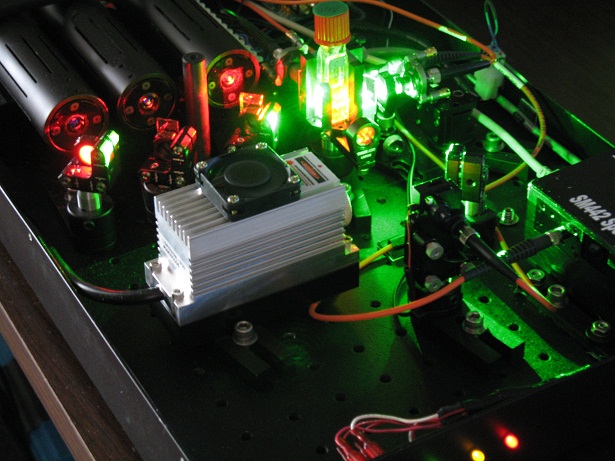
|
Nanotube Metrology Current SWCNT production techniques yield polydisperse samples containing many different types SWCNTs, defined by differing chiralities and lengths. Thus it is important to develop methods to produce well-characterized fractions of carbon nanotubes with controlled parameters (length, diameter, chiral angle, charge, concentration and purity), so that vendors and buyers can trade SWCNT with confidence. These methods can be collectively categorized as Nanotube Metrology. Characterization of nanotubes is critical in order to advance applications and to enable well-controlled environmental, health and safety (EHS) assessments. National Institute of Standards and Technology (NIST) leads an ongoing collaboration among various industrial, academic and government researchers to develop such methods, and to define reference standards. These efforts were recently highlighted at a NIST-sponsored workshop. NIST also has published a Recommended Practice Guide which launched the extensive ISO activities in SWCNTs. Prof. Weisman, through his activities at Rice University and ANF, continues to make valuable contributions to this effort. |



